Inverted NFT logic
Physical receipts are the object. The NFT is demoted to an indestructible proof of purchase, literalizing the critique that "NFTs are just receipts" while forcing blockchain-native collectors to handle paper.
← Back home / VVhitepaper
Pay what you want at self-checkout kiosks at Art Basel. Your receipt is the artwork, with a seed phrase printed on it that unlocks a non-transferable NFT, literalizing the critique that NFT buyers purchase "just receipts." Receipt length equals payment amount. A live display tracks whether the artist recoups $74,211 in production costs or takes a public loss.
01
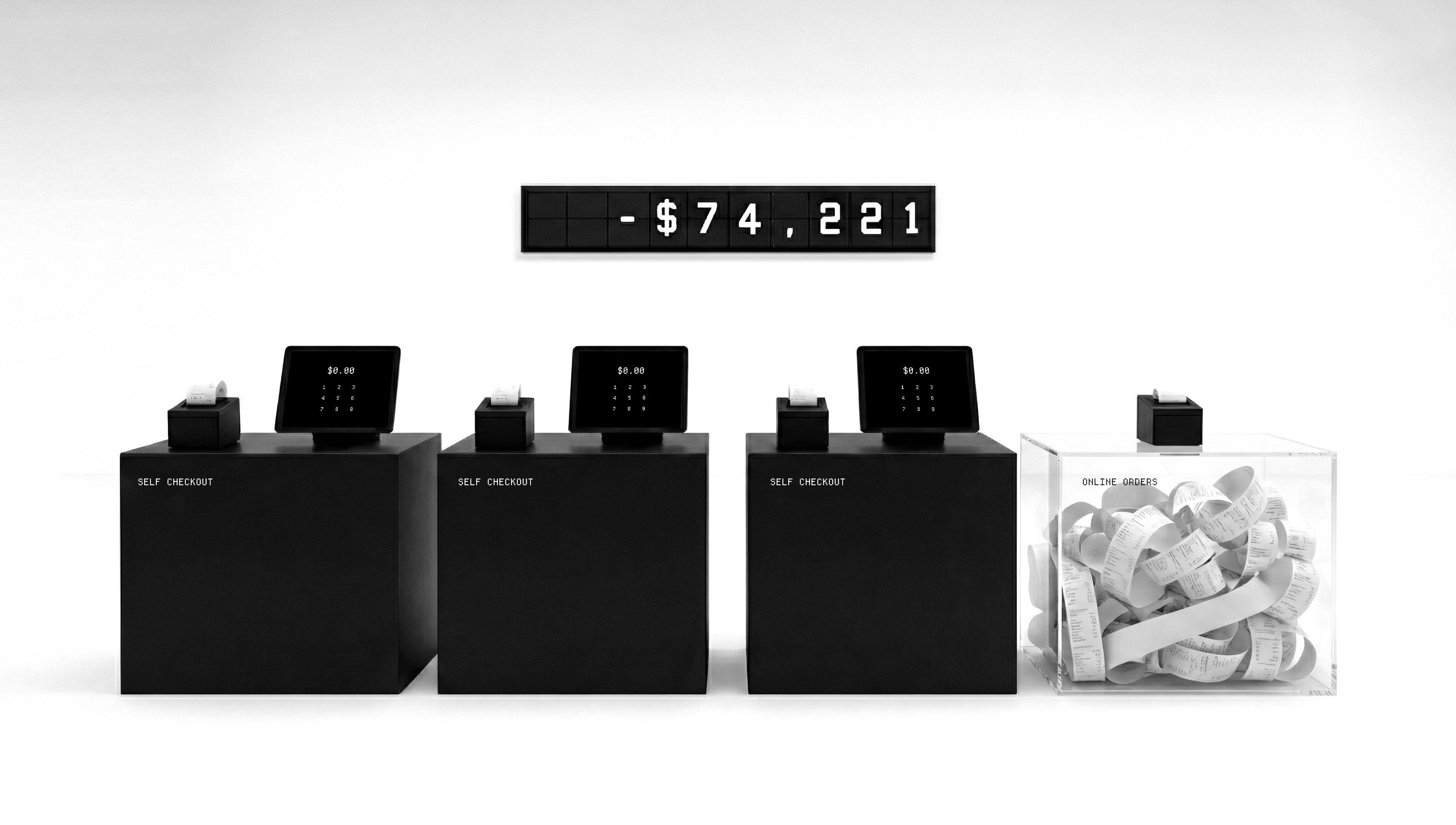
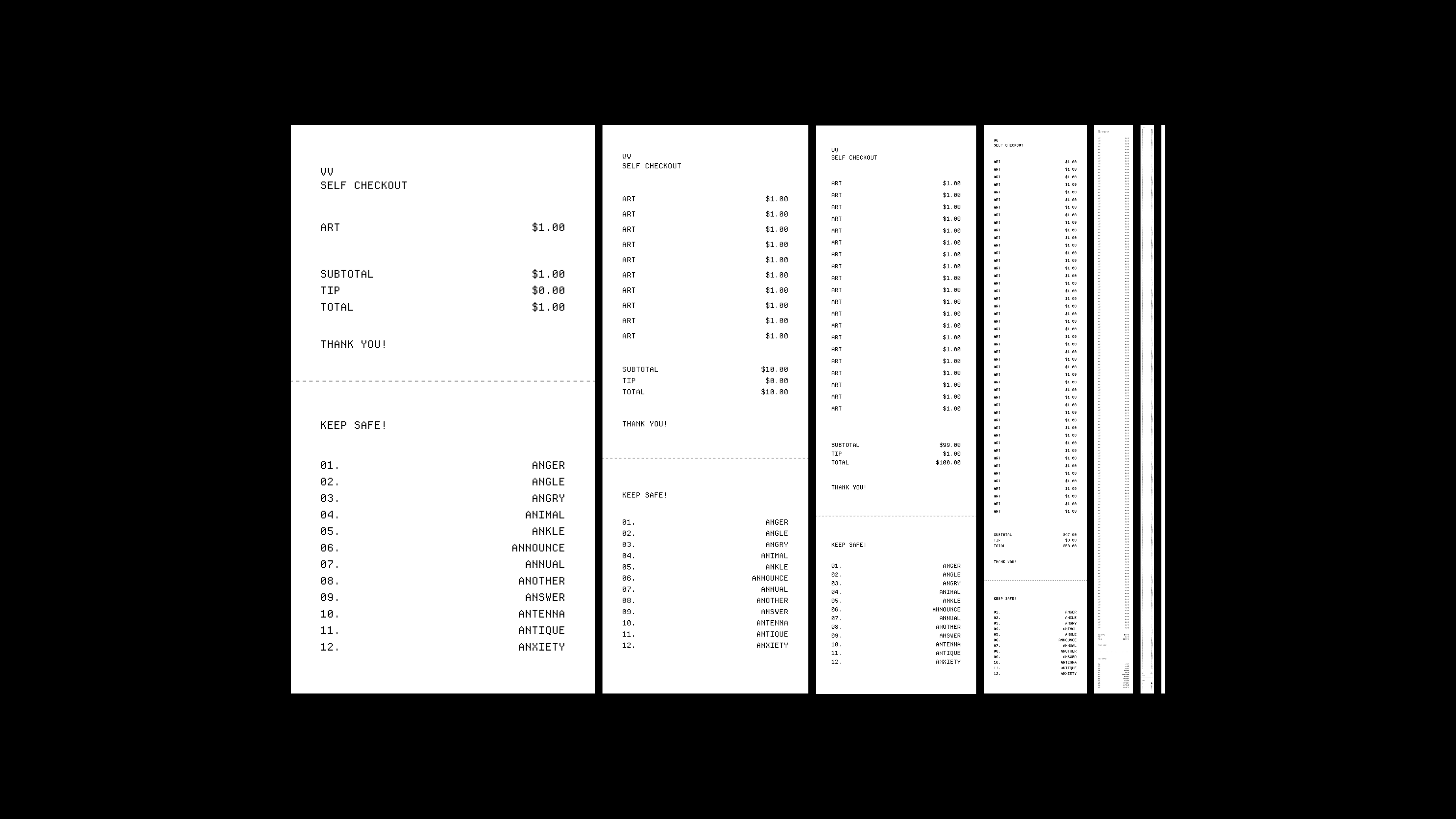
02
Self Checkout is a functional retail installation positioned inside Art Basel. Attendees pay whatever they want. Remote participants through the ONLINE ORDERS kiosk do the same. Each transaction generates a printed receipt as the primary artwork, and unlocks a non-transferable NFT companion via seed phrase printed directly on that receipt. The entire booth operates as a live economic performance where the artist's $74,221 exposure, collector behavior, and ultimate market verdict are transmitted in real time.
Physical receipts are the object. The NFT is demoted to an indestructible proof of purchase, literalizing the critique that "NFTs are just receipts" while forcing blockchain-native collectors to handle paper.
A split-flap kinetic display begins at -$74,221 and updates with each contribution. Payment size sets receipt length, making hierarchy visible and unavoidable on the fair floor.
Loss, break-even, or profit each delivers a different critique: market failure, perfect collective valuation, or proof that abundance-based pricing and social pressure can outperform tradition.
03
Unlimited edition, immediate fulfillment, and transparent economics challenge the default Basel script of scarcity, whispered prices, and institutional mediation.
04
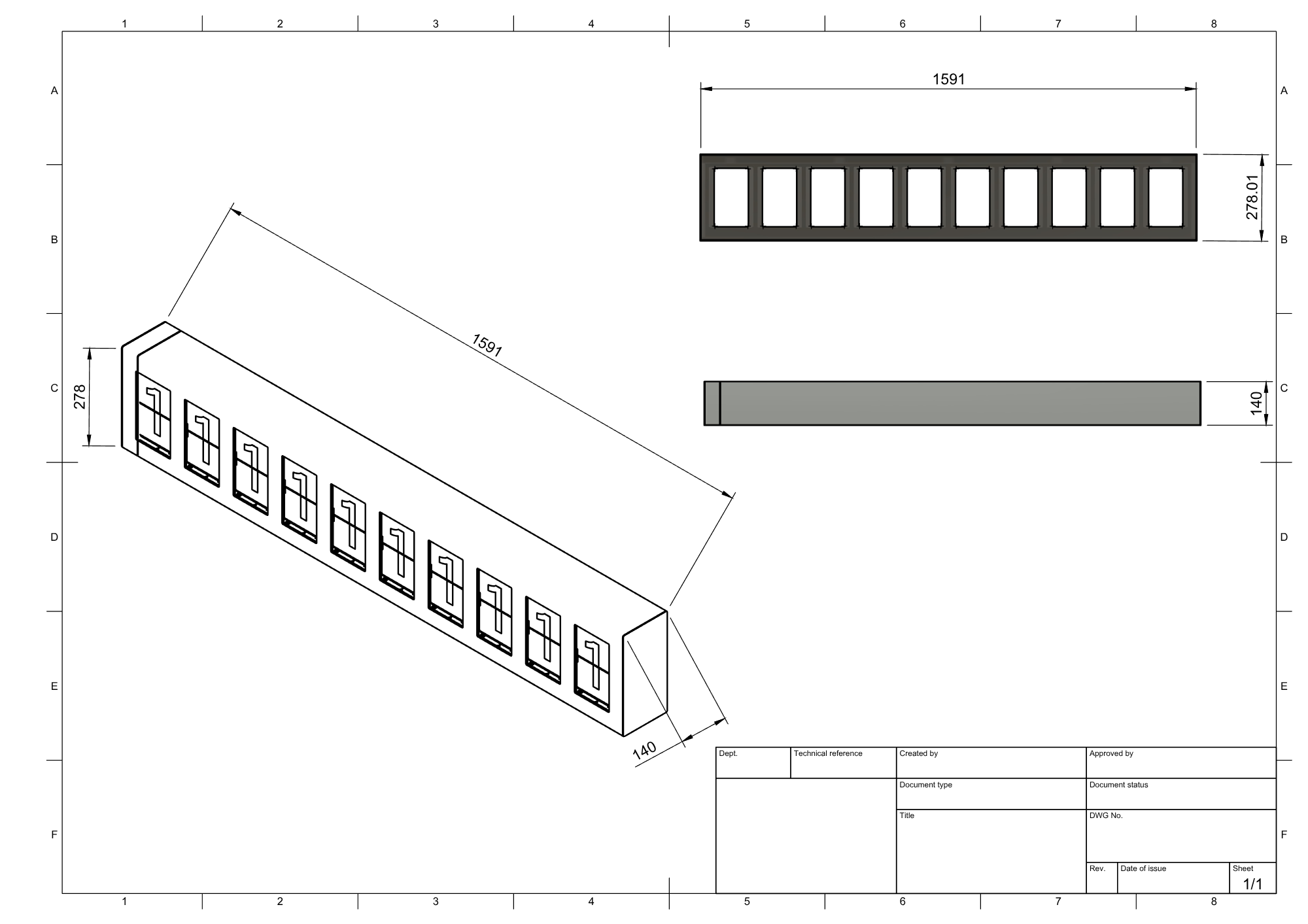

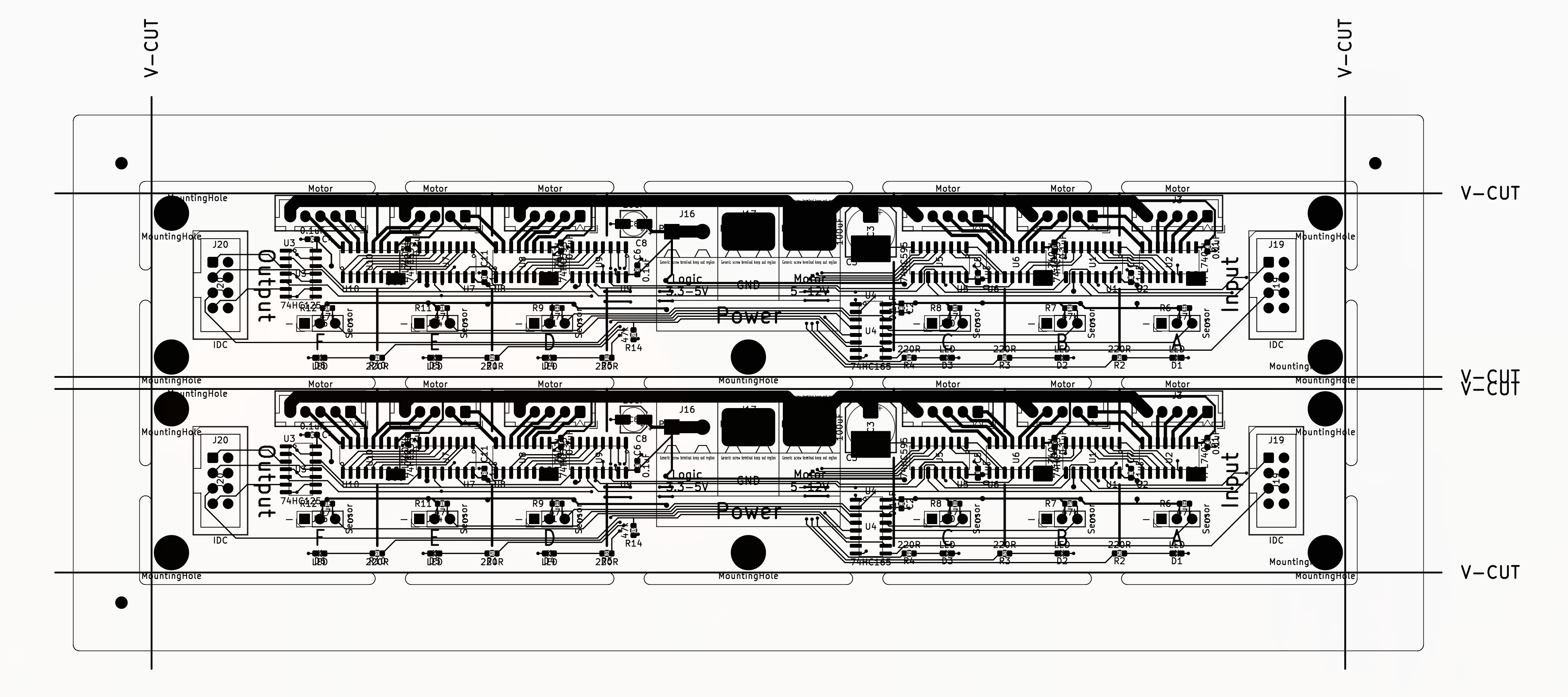
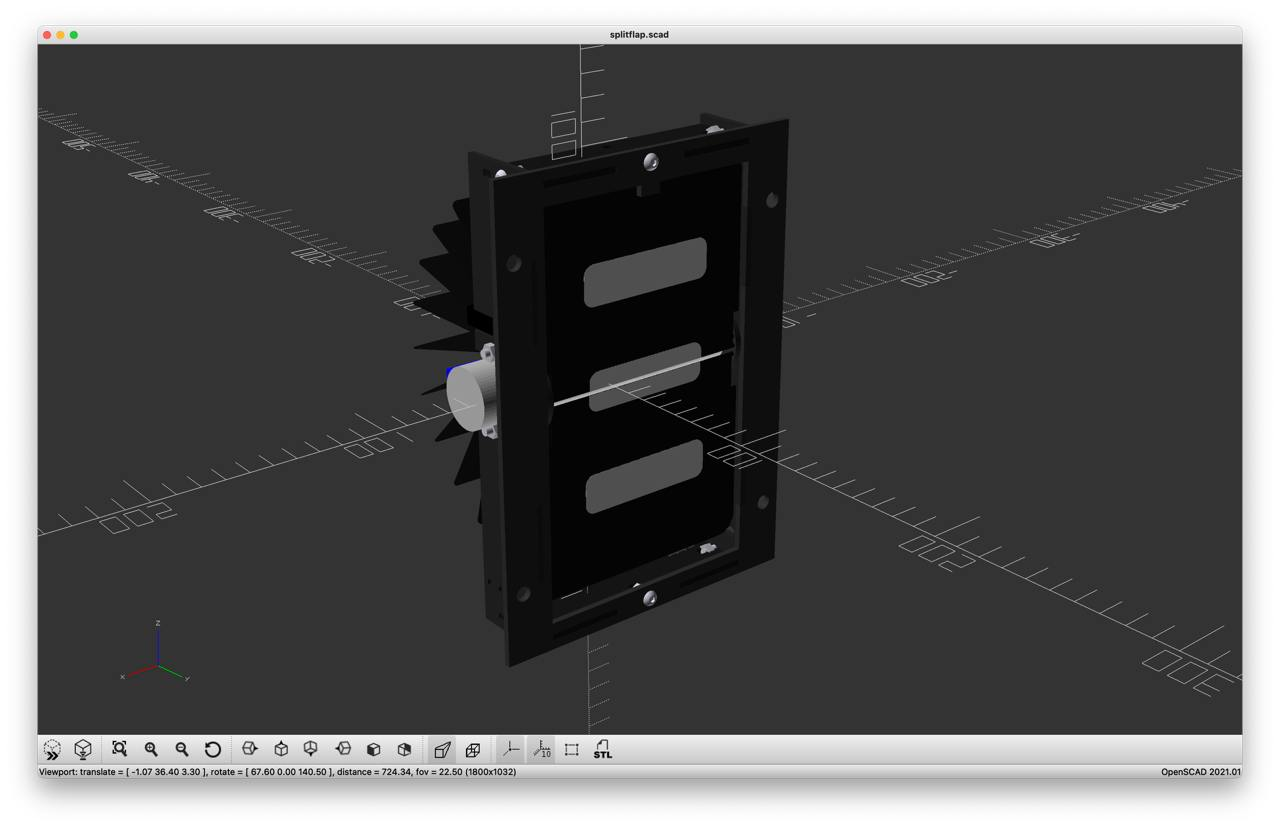
05
06
The installation elevates the receipt as the entire artwork. This documentation is usually hidden by galleries. Length equals value equals contribution. The split-flap display functions like a hybrid stock ticker, fundraising thermometer, and scoreboard, making economics legible without prescribing emotion.
Every receipt is technically the same edition yet materially different. A two-inch slip and a two-foot streamer are both "Self Checkout" but communicate wildly different choices.
The number on the wall is both suspense and evidence. It shows whether Basel could pull an independent artist out of debt, looked away, or over-subsidized the critique.
Soulbound tokens prevent on-chain trade, yet the printed seed phrase reintroduces informal resale. The system collapses trustless tech back into trust-heavy human exchange on purpose.
Democratized access (any amount, anywhere) meets late-capitalist critique: self-checkout kiosks usually save labor costs; here they become Basel's most transparent gallery.
07
Without the display, tipping would parody service-industry expectations in fine art. With the live PNL and receipt-length mechanic, tips become public subsidy. Visitors must reconcile whether they're rewarding labor, underwriting a critique, chasing a longer receipt, or all of the above. The moment the tip clears, the number moves, and everyone sees it. Including the next collector in line.
Tipping someone who already spent $74,221 to be here feels absurd; tipping someone losing money in real time feels charitable; tipping someone exposing the system feels like participating in the performance. That tension is the point.
08
What separates this receipt from CVS ephemera? Context, risk, and intent.
Unlimited edition, yet length creates status and collectibility gradients.
Buyers purchase agency, visibility, and narrative participation as much as paper.
Receipts become portable conversation pieces, photo props, and lasting reminders of the decision made under public pressure.
Numbers change behavior. This introduces herd mentality, FOMO, guilt, and spectacle across the fair's timeline.
09
Negative balance documents market failure in real time. The final number plus receipt distribution becomes expensive evidence that transparency wasn't rewarded.
Hitting $0 means the audience collectively valued the experiment exactly at cost—perfect crowdsourced appraisal and proof of shared responsibility.
Going positive proves alternative pricing can outperform tradition. Or that social pressure and status competition are powerful economic forces. Either validates the thesis.
10
Traditional patrons lose price guidance and face public accountability. Crypto natives confront paper as the asset. Status seekers must decide how long a receipt they want to carry.
The artist literally works the kiosk while his debt scrolls overhead. The piece is both business model and performance.
Basel witnesses a transparent, abundance-based system thriving inside its walls. No back rooms, no gatekeepers, no scarcity theater.
Every receipt, every tip, and the final display value become the archive. Visual evidence replaces folklore.
11
Participation equals complicity. Anyone engaging with the kiosk accepts retail choreography inside a blue-chip fair. Every collector leaves with proof of how much responsibility they assumed for the experiment's outcome or failure. Remote buyers share the ledger but miss the social theater, creating two layers of engagement that still converge on the final number. The artist retains the master receipt. The final display photograph shows precisely how the market answered the question: "What was this worth?"
12
The artist self-funds every component, reinforcing the stakes: the display's starting -$74,221 is not a thought experiment. It's the ledger.
13
14
Every purchase or tip instantly reduces the loss and prints a receipt whose length is locked to the payment.
PROJECTED LENGTH
9.00 in
PNL
- $74,221
VV
SELF CHECKOUT